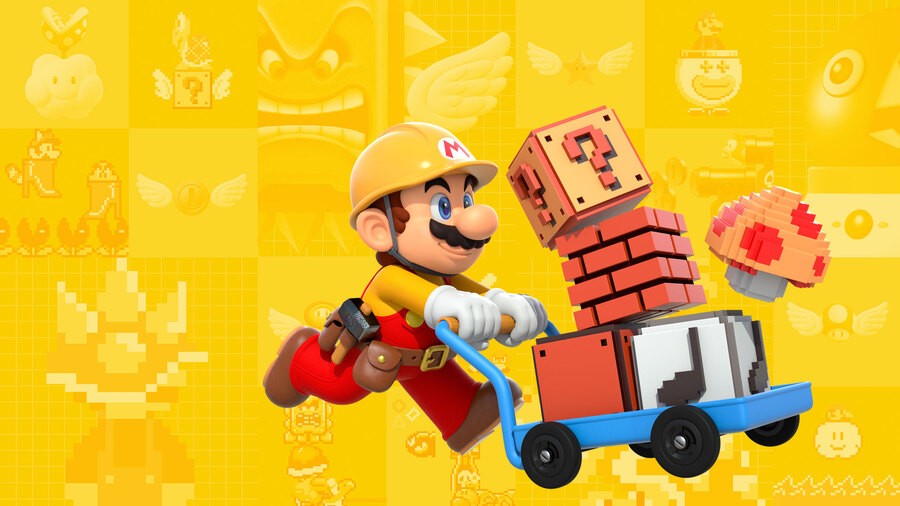
Super Mario Maker is upon us, and delivers something that may have seemed inconceivable in past years. Nintendo is handing over the keys of its most valuable franchise to gamers, providing a quirky and fun tool for creating, sharing and playing 2D Mario levels. It's been critically acclaimed, is at the forefront of Nintendo's Super Mario 30th Anniversary celebrations and is likely to be one of the most successful Wii U releases to date.
Ahead of release we've been lucky enough to catch up with Super Mario Maker's game director, Yosuke Oshino, posing a few questions about how the game came together and his hopes for its role in the Nintendo community. We also learn about the less glamorous - and coincidental - genesis of the project, while picking up a few tips along the way.
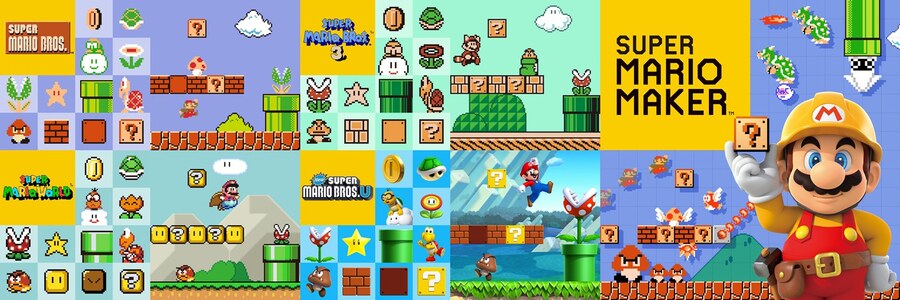
Was the concept for Super Mario Maker originally conceived with the Wii U and Mario's 30th Anniversary in mind, or was it an evolution of a longstanding idea within the walls of Nintendo?
This being Mario's 30th Anniversary is just a coincidence, it's not something we consciously planned. The idea started with the course editor for the side scrolling Mario games. This tool was previously running on PC, but the team in charge of it thought that it might be helpful for developing future Mario games if the tool ran on the Wii U GamePad and so they started doing some experiments. While doing this they realized how easy it was to make courses and how fun it was for people like them who had no experience with level design. So they decided to bring the idea of making this tool into a game to the producer, Tezuka-san.
What were some of the challenges in including elements from New Super Mario Bros. U and Super Mario World and making them work in the 8-bit Mario style?
We understood already from the tool team's prototype that the close connection between the aspects of "Creating" and "Playing" was a key point so we were careful to make sure this was not lost. Also, we were very conscious that many people, including myself, harbor a strong, nostalgic attachment to the original games, so we made sure that we'd create something that would match the expectations of these people so that they too can enjoy the game. As we based the physics on those in New Super Mario Bros. U, the game is just as easy to play no matter what game style you pick.
Since the game style or theme can be changed at any point, we had to create new art for enemies that weren't originally in the respective games, and add Super Mario Bros. versions of the airship and ghost house themes. So you will be able to experience these in a brand new way.
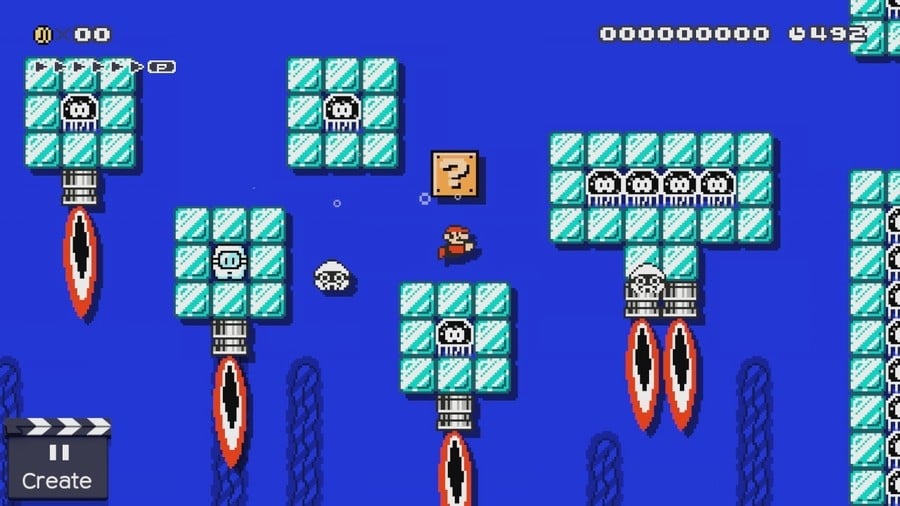
What key design decisions were made when developing a level creator and user interface which would be intuitive enough for anyone to pick up easily? Were there concerns about making it too complex?
Although it is an editing game, if we over-emphasised the game's tool aspect then it would tend get too complex, and make the game look too intimidating. We instead designed the interface around the idea that Super Mario Maker should be something fun that anyone can play. We worked hard to reduce the number of buttons as much as possible so that we could reach as wide an audience as we could. If we made the game more complex, then along with the more advanced features that it would bring, it would also increase the barriers for people to start making courses. So we had a lot of discussions within the team about the balance between having enough features and making sure it doesn't feel too daunting.
From E3 2014 to where we are now in 2015, the content included in the game has increased rapidly. Was much of this planned from the beginning, or did it evolve naturally as development progressed?
Although it hadn't been fully decided, at E3 2014 we already had the idea that we wanted the Super Mario Bros. 3 and Super Mario World game styles in addition to Super Mario Bros. and New Super Mario Bros. U. And also the idea users should be able to upload their courses to a server to share with people around the world. So there wasn't any big changes to the core ideas as development went on. However, we never stopped to look for additional ways of making the game more fun, so the smaller features, including enemies and objects, have increased beyond what we originally planned.
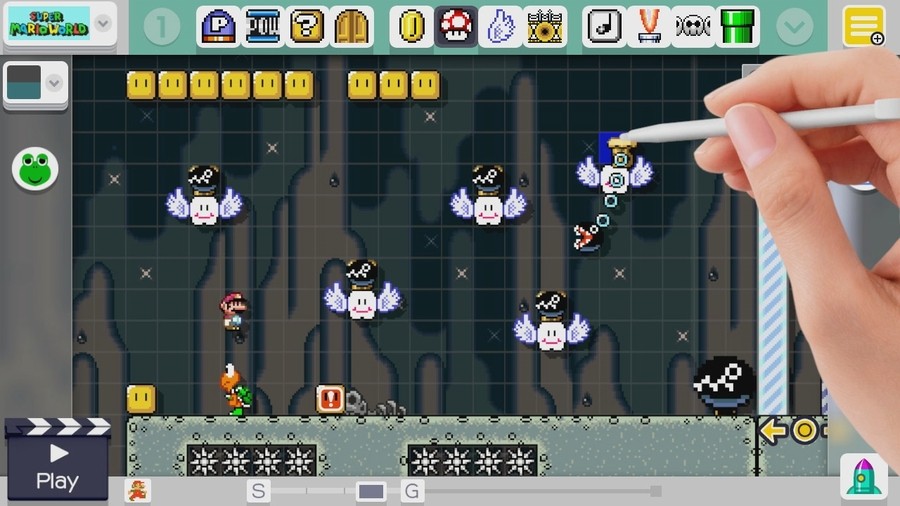
What were some of your personal thoughts on the Nintendo World Championships during E3 this year? Were you impressed by the skills on show?
I was there at the show actually, and I could sense the excitement when they were playing Super Mario Maker in the final. I was worried that it would be too difficult and they wouldn't be able to beat it, but they astonished me with how well they could play courses they had never seen before. It's really fun just watching people play through difficult courses like that with such skill.
What are your hopes for the online sharing aspects of this game, and what sort of content do you most hope to see from Nintendo fans?
I hope that users will actively post their courses online without shying away, and that when they see a course they like they will give them stars or post comments so the creators will be motivated to create more and even better courses. When you play, you will notice the spots where other players failed as they will be marked with an "X". I hope people will enjoy seeing how others fared on the same course like this.
For my part, I'm looking forward to discovering how users will combine enemies and objects in creative ways, coming up with unique courses that perhaps not even the development team could imagine.
You can find courses that are currently popular in the 100 Mario Challenge and on the Featured Courses list so I hope people will enjoy playing these. And it might also be fun to try playing new courses nobody else has played before in the Up & Coming list.
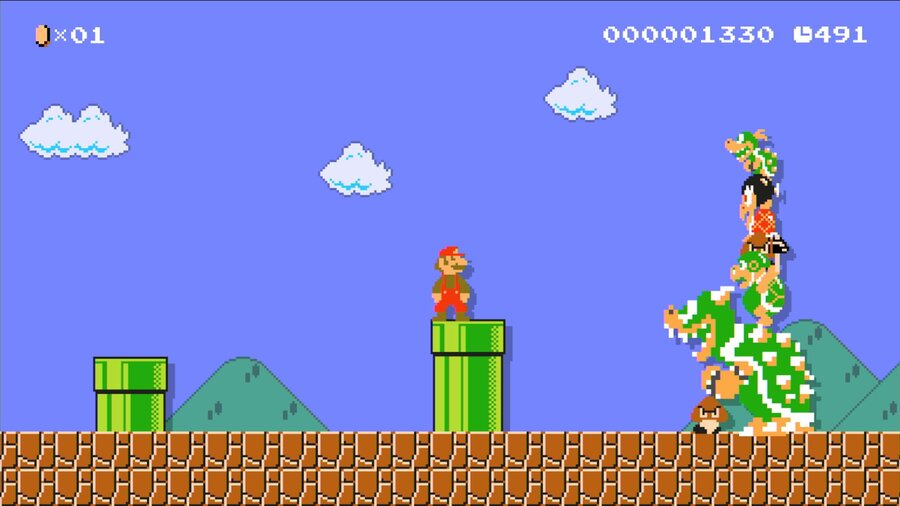
Do you feel that games like Super Mario Maker (and other such as Mario vs. Donkey Kong: Tipping Stars), in which creative tools are given to gamers to express themselves in Nintendo titles, will continue to increase in importance for the company?
Online games using UGC have become popular all around the world, and I think they have established themselves as a distinct genre. Super Mario Maker is one such game using UGC that Nintendo has made for users around the globe to enjoy. If I have the opportunity again in the future, I would very much like to work on another game that uses UGC in some way.
Lastly, can you share any tips for our readers to help them create fun and challenging Super Mario Maker levels of their own?
I think a key point to consider is whom you're making the course for. Difficult courses are not necessarily the most fun. If you can work on your courses imagining how your players would experience them, and aim to make a course they would want to play over and over, a course they can almost, but not quite, beat at first, then this should lead to them enjoying your course more.
The Artbook that comes with the game contains lots of hints for designing good courses, and there are also videos that accompany it. The e-manual features some helpful advice as well so I hope you will take a look at that too.
We'd like to thank Oshino-san for his time.





Comments 18
Just one more day and then I can let my creativity run wild with designing courses. I already tried this game at Gamestop last Sunday and I promptly preordered it immediately afterwards. I think I can wait one more day!
I'm gonna spend all sunday long playing it. It's gonna be a blast!
I got sent my download code from Gamesrocket earlier, I tried to download it but got a message telling me the code can't be used yet and to try again after the release date.I'll have a sneaky try again in a few hours,if that fails I guess I'll need to wait till it's midnight in Europe.
I am loving MGSV on another platform at the minute but seeing I've popped down to a friend to collect my SMM bundle I'm just going to walk Canine Loyal and then I'll give it a spin.
If you want to get your hands on big releases early it's always advisable to play nicely with your local independent game shop #justsaying
Edit: And yeah the 8 bit classic Mario Amiibo really is rather large and seems to weigh a hell of a lot more than all the other figures, I'd say only the SMC Bowser looks bigger and feels heavier
I'm really getting anxious about the fact that GAME haven't emailed me to say my order has been shipped. They've refunded me 4 out of 7 payments.
@Nintenjoe64 Sorry, but that's hilarious
I will be waiting at the door at 10:00 AM when my local GameStop opens to pick up my preorder along with a Zero Suit Samus amiibo and put in a preorder for the XCX special edition.
I can't wait to play it! Gonna have to wait till after school tomorrow though. Ugh.
My guess is that mario Maker will be such a hit that loads of developers will want to copy it, and Minecraft will come to the 3DS, Wii U or both
@tysonfury My hope is that lots of famous developers make levels for it!
(Disappointingly there's no section in SMM for them, like there was in WarioWare DIY)
For Super Mario Maker 2, I want them to let us tackle the 3D games. With 64, Sunshine, Galaxy, and 3D World palettes. It'd be tricky to make it as easy and intuitive as 2D, but it would be so cool if they could pull it off.
@Assassinated I would hope that they make Super Metroid Maker first. They could use huge parts of SMM for that by just swapping out some assets.
So the thing that makes me wonder is whether its that open source Super Mario Bros game which had a level creation tool which is how they got inspired to make Super Mario Maker.....
@Artwark Super Mario Bros. X? Perhaps, because it copied not a few features from there. And there's another one, Super Mario Flash 2 (google it) which is renowned for it's level editing which has the ability (easter egg) to control Mario in the title screen.
@Nintenjoe64 I'm in pretty much the same situation, and my order says unshipped on their website. However, I asked Game Help on Twitter and they said mine was shipped. So it might be a good idea for you to email or Twitter them to see if yours has been shipped. I'm still waiting for the final 2 refunds though.
I phoned and they told me it was shipped. I got my final refunds by the time I phoned. Fingers crossed it actually arrives!
"Although it is an editing game, if we over-emphasised the game's tool aspect then it would tend get too complex, and make the game look too intimidating. We instead designed the interface around the idea that Super Mario Maker should be something fun that anyone can play."
I think this is something a lot of people don't seem to understand. The appeal of Mario Maker isn't just the fact that you can create - but also, that it's very easy to do so. The easy UI is just as important as any editing features that the game may include - if it was dry and stuffed with text (like 99% of other editors out there), it just wouldn't be appealing, no matter how much content it would have.
Haters would cry 'casuals!', and to that I say - yes, exactly. The casual/family audience isn't a new phenomenon that emerged with Wii and DS - it's a demographic that Nintendo has partially catered to since the NES days (simple hardware, inoffensive material, non-intimidating games).
Can't wait. Gonna drop into the big dubya tomorrow, gonna grab a SMM amiibo bundle for $69 and play the hell out of it when I get home.
Tap here to load 18 comments
Leave A Comment
Hold on there, you need to login to post a comment...